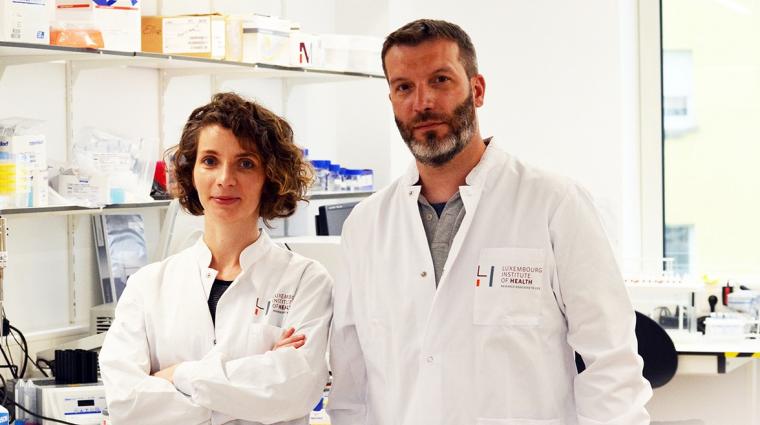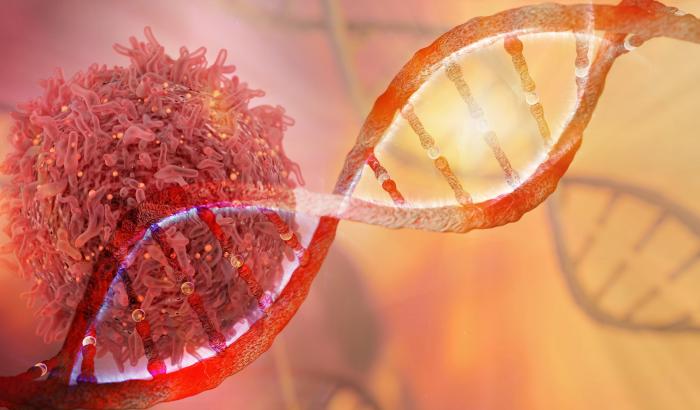
shotshop.com
Measuring small molecules in patients’ blood after a cardiac arrest or a heart attack could help doctors adapt their treatment strategy for better outcomes.
Cardiovascular diseases, which include heart failure and myocardial infarction (or simply heart attack), remain the main cause of death worldwide. Hence, it is necessary to identify new tools to detect the development and predict the outcome of these conditions for a better treatment strategy.
Two collaborative works that contribute to fill such gaps were presented by members of the Cardiovascular Research Unit of the Luxembourg Institute of Health’s Department of Population Health at the 3rd World Congress on Acute Heart Failure in Florence, in May 2016, and at the European Society of Cardiology Congress in Rome in August 2016.
They confirmed the potential use of two molecules detectable in a blood sample to help doctors predict the outcome of patients after suffering a cardiac arrest or a heart attack.
Cardiac arrest and heart attack – different causes and consequences
Cardiac arrest and heart attack are two cardiac events that have different causes and different consequences.
Cardiac arrest is caused by an electrical problem in the heart and death occurs within minutes if the victim doesn’t receive treatment. If the person survives, it can lead to severe neurological damage.
A heart attack is caused by a blocked artery that interrupts blood flow and, although it can lead to death, many patients survive; but the longer it takes for them to receive treatment, the greater the damage to the heart muscle, which can lead to heart failure.
Identifying patients who are at risk to develop complications is still a challenge. The findings from the Cardiovascular Research Unit reveal two new possible molecules that can be measured in a simple blood test and that could predict if the patient will develop complications after surviving a cardiac arrest or a heart attack.
If it is confirmed that these molecules can be used to predict what might happen to patients, doctors will be able to better tailor treatment to the individual patient and optimize costly resources in intensive care units to patients who would benefit the most.
RNA molecules as biomarkers for cardiovascular disease
Heart failure is a serious condition: the heart can’t keep up with its workload and this can lead to cardiac arrest, which can cause serious damage to the brain and commonly leads to death. During diseased states, several molecules are released from cells.
One of these molecules is RNA, which is produced from DNA, our hereditary material, and can come in different sizes and types. Some RNAs allow the production of proteins (molecules that are building blocks in a cell), while others don’t; they can regulate the expression of genes, that is, when genes are turned on and off. Examples of such RNAs are microRNAs and circular RNAs. These different types of RNA may reflect disease status and thus may be used as so-called biomarkers.
A biomarker is any molecule in our bodies that can be measured in tissues, cells, or fluids and can give an indication about the state of health or disease. They are used on a daily basis in the hospital to help understand the cause, diagnosis, prediction and even response to treatment of a disease. For example, blood sugar is an established biomarker for diagnosing or predicting diabetes, prostate specific antigen (PSA) is a biomarker for diagnosing prostate cancer even at very early stages and circulating tumor cells (CTC) in the blood can indicate treatment response for breast cancer.
For a biomarker to be used in the clinic and help doctors predict patient outcome, it should fit certain criteria, such as being easily accessible, specific to the condition of interest, stable and reliable. Certain types of RNA, like microRNAs and circular RNAs, have these characteristics: are easy to access, since they are found in the blood, are specific to the outcome and are stable.
microRNAs predict mortality and poor neurological outcome after cardiac arrest
In one of the studies, the researchers verified that one microRNA (named microRNA 124) found in the blood of patients after cardiac arrest can be used to predict mortality and poor neurological outcome.
The researchers screened a total of 579 patients from a clinical trial performed in 10 European countries and called Targeted Temperature Management (TTM). The trial addressed whether there was any benefit of lowering a patients’ body temperature temporarily (hypothermia therapy) after cardiac arrest. Blood samples were collected 48 hours after cardiac arrest and the patients cognition was evaluated after 6 months.
The levels of microRNA 124 in the blood 48 hours after cardiac arrest were significantly elevated in patients with poor neurological outcome after 6 months compared to patients who had a good outcome.
Such change in microRNA 124 was not associated with the hypothermia therapy used in the first days at the intensive care unit, making it good indicator, independently if the patient received low or normal body temperature regimen. Furthermore, higher levels of microRNA 124 were associated with a greater risk of death, having the potential to predict mortality.
Although the researchers only focused on one altered microRNA, additional microRNAs may be used together with this one to aid in the prognosis of these patients. Thus, future studies searching for other disregulated microRNAs in this context may increase the possibility of developing a prognosis test that can help doctors choose the best treatment for each patient.
This article is a contribution from Clarissa Pedrosa da C. Gomes, Post-doctoral researcher in the Cardiovascular Research Unit at the Luxembourg Institute of Health. Clarissa has a background in Biological Sciences and Biotechnology, with expertise in Molecular Biology. She loves to educate people on science and disseminate the exciting discoveries from the scientific world. Interested to read more about the Cardiovascular Research Unit’s work on biomarkers and heart attack? Then click on the Infobox.
Author: Clarissa Pedrosa da C. Gomes
Photo: shotshop.com
Infobox
The second work presented at the events focused on predicting heart failure, more especifically, left ventricular dysfunction, a life threatening condition that can develop after acute myocardial infarction (heart attack). However, existing tools to detect it have serious limitations, making the discovery of novel biomarkers essential to improve the identification of patients at risk. The researchers unveiled a new circular RNA called MICRA (Myocardial Infarction-associated Circular RNA) as a predictor of left ventricular dysfunction after myocardial infarction. Patients with low levels of MICRA in their blood were at high risk to develop the life threatening dysfunction. Although more studies are needed before using MICRA to predict outcome of patients after heart attack, these findings are an important step to advance cardiovascular disease management and to help doctors tailor treatment to the individual patient.
MICRA was first discovered in 409 patients from the national registry of patients with myocardial infarction in Luxembourg (LUCKY registry) and then confirmed by the Leipzig Research Center for Civilization Diseases (Germany) in other 233 patients suffering a heart attack. An additional collaborative study by the Department of Heart Failure and Transplantology (Poland) verified levels of MICRA in the left ventricle of patients with end-stage heart failure. Such observation suggests that this circular RNA can play a role in the development of left ventricular dysfunction, which could open new possibilities for developing new therapies.
o Yvan Devaux et al. Association of Circulating MicroRNA-124-3p Levels With Outcomes After Out-of-Hospital Cardiac Arrest: A Substudy of a Randomized Clinical Trial JAMA Cardiol. 2016; 1(3):305-313.
o Melanie Vausort et al. Myocardial Infarction-associated Circular RNA Predicting Left Ventricular Dysfunction. J Am Coll Cardiol. 68(11):1247-8, 2016.







